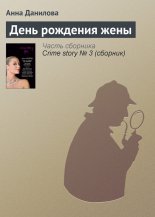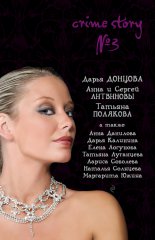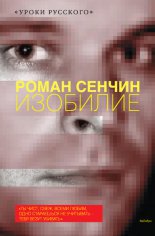Камень ломает ножницы. Как перехитрить кого угодно: практическое руководство Паундстоун Уильям

Palmer, Brian (2012). “Your Pet’s Name vs. Where You Met Your Spouse.” Slate, Jun. 7, 2012. www.slate.com/articles/news_and_politics/explainer/2012/06/mitt_romney_email_hack_which_
password_recovery_questions_are_most_secure_.html.
Ptri, Eero J. (2009). “Do Hot Hands Warm the Mutual Fund Investor? The Myth of Performance Persistence Phenomenon.” International Research Journal of Finance and Economics 34, 117–139.
Patterson, Scott (2010). The Quants. New York: Crown Business.
Paul, Rodney J., Andrew P. Weinbach, and Brad Humphreys (2011). “The Belief in the ‘Hot Hand’ in the NFL: Evidence from Betting Volume Data.” University of Alberta Working Paper 2011–16.
Perlroth, Nichole (2012). “How to Devise Passwords That Drive Hackers Away.” New York Times, Nov. 7, 2012.
Pinker, Steven (2011). The Better Angels of Our Nature: Why Violence Has Declined. New York: Viking.
Pinkham, Roger S. (1961). “On the Distribution of First Significant Digits.” Annals of Mathematical Statistics 32, 1223–1230.
Poe, Edgar Allan (1845). “The Purloined Letter.” xroads.virginia.edu/~hyper/poe/purloine.html.
Poole, Kate (2011). “Analytics Industry Expected to Grow, Advance in 2011.” EContent, Jan./Feb. 2011. www.econtentmag.com/Articles/News/News-Feature/Analytics-Industry-Expected-to-Grow-Advance-in-2011–73911.htm.
Poundstone, William (2005). Fortune’s Formula: The Untold Story of the Scientific Betting System that Beat the Casinos and Wall Street. New York: Hill and Wang.
Poundstone, William (2010). Priceless: The Myth of Fair Value (and How to Take Advantage of It). New York: Hill and Wang.
Ramos, Sophia (2009). “The Size and Structure of the World Mutual Fund Industry.” European Financial Management 15, 145–180.
Rampell, Catherine (2008). “Madoff: As Consistent a Golfer as He Was an Investor.” New York Times, Dec. 19, 2008.
Rath, Gustave J. (1966). “Randomization by Humans.” American Journal of Psychology 79, 97–103.
Reichenbach, Hans (1949). The Theory of Probability. Berkeley: University of California Press.
Richards, Carl (2010). “Investors Are Still Behaving Badly.” New York Times, Aug. 5, 2010.
Ross, Bruce M. (1955). “Randomization of a Binary Series.” American Journal of Psychology 68, 136–138.
Roxburgh, Charles, Susan Lund, and John Piotrowski (2011). “Mapping global capital markets 2011.” McKinsey & Company, www.cfr.org/economics/mckinsey-global-institute-mapping-global-capital-markets-2011/p25592.
Salsman, Richard M. (2004). “The Cause and Consequences of the Great Depression, Part 1: What Made the Roaring ’20s Roar.” Intellectual Activist, Jun. 2004.
Scherzer, Lisa (2012). “Cracking Your PIN Code: Easy as 1–2–3–4.” Yahoo! Finance, Sept. 21, 2012. finance.yahoo.com/blogs/the-exchange/cracking-pin-code-easy-1-2-3-4-130143629.html.
Schiffman, Nathaniel (2005). Abracadabra! Amherst, NY: Prometheus Books.
Schroeder, Manfred (1992). Fractals, Chaos, Power Laws: Minutes from an Infinite Paradise. New York: W. H. Freeman.
Shannon, C.E. (1948). “A Mathematical Theory of Communication.” Bell System Technical Journal, Jul. and Oct. 1948, 379–423; 623–656.
Shannon, Claude (1953). “A Mind-Reading Machine.” Bell Laboratories memorandum, Mar. 18, 1953.
Poundstone, William (1955). “ Game–Playing Machines.” Journal of the Franklin Institute 250, 447–453.
Sharpe, Steven (2002). “Re-examining Stock Valuation and Inflation: The Implication of Analysts’ Earning Forecasts.” Review of Economics and Statistics 84, 632–48.
Sherden, William A. (1998). The Fortune Sellers: The Big Business of Buying and Selling Predictions. New York: John Wiley.
Shiller, Robert J. (1996). “ Price–Earnings Ratios as Forecasters of Returns: The Stock Market Outlook in 1996.” www.econ.yale.edu/~shiller/data/peratio.html.
Shiller, Robert J. (2005). Irrational Exuberance (second edition). New York: Broadway Books.
Siegler, M. G. (2009). “One of the 32 Million With a RockYou Account? You May Want to Change All Your Passwords. Like Now.” Techcrunch.com, Dec. 14, 2009. techcrunch.com/2009/12/14/rockyou-hacked/.
Singer, Natasha (2012). “Secret E-Scores Chart Consumers’ Buying Power.” New York Times, Aug. 19, 2012.
Sobyanin, Alexandar and V. Suchovolsky (1993). “Elections and the Referendum December 11, 1993, in Russia.” Report to the Administration of the President of the RF, Moscow.
Spencer-Brown, G. (1957). Probability and Scientific Inference. London: Longmans, Green.
Stein, Ben, and Phil DeMuth (2003). Yes, You Can Time the Market! New York: John Wiley.
Stein, Mark A. (1993). “ ‘Evil Twin’ Helps Even the Odds in Office Betting Pools.” Los Angeles Times, Apr. 17, 1993.
Steinert-Threlkeld, Tom (2013). “High-Frequency Trading Less Profitable, Less Prevalent.” TradersMagazine.com, Mar. 1, 2013. www.tradersmagazine.com/news/high-frequency-trading-less-profitable-prevalent-110953-1.html.
Tanaka, Sanette (2013). “The Best Day to List a Home Is…” Wall Street Journal, Feb. 8, 2013.
Tetlock, Philip. Expert Political Judgment: How Good Is It? How Can We Know? Princeton: Princeton University Press, 2005.
Thaler, Richard H., and William T. Ziemba (1988). “Anomalies: Pari-mutual Betting Markets: Racetracks and Lotteries.” Journal of Economic Perspectives 2, 161–174.
Time (uncredited) (1936). “Zenith.” Time, Jun. 29, 1936.
Time (uncredited) (1938). “Radio Patterns and Peepholes.” Time, Sep. 5, 1938.
Time (uncredited) (1946). “McDonald v. the Adenoidal.” Time, Feb. 4, 1946.
Tuttle, Brad (2012). “The Passive– Aggressive Way to Haggle Online: Abandon Your Shopping Cart.” Time, Sep. 27, 2012.
Tversky, Amos, and Thomas Gilovich (1989a). “The Cold Facts about the ‘Hot Hand’ in Basketball.” Chance 2, 16–21.
Tversky, Amos, and Thomas Gilovich (1989b). “The ‘Hot Hand’: Statistical Reality or Cognitive Illusion?” Chance 2, 31–34.
Tversky, Amos, and Daniel Kahneman (1971). “Belief in the Law of Small Numbers.” Psychological Bulletin 76, 105–110.
Tversky, Amos, and Daniel Kahneman (1974). “Judgment under uncertainty: Heuristics and biases.” Science 185, 453–458.
Tversky, Amos, and Daniel Kahneman (1983). “Extensional Versus Intuitive Reasoning: The Conjunction Fallacy in Probability Judgment.” Psychological Review 90, 293–315.
Varian, Hal (1972). “Benford’s law.” American Statistician 26, 65.
Vendantam, Shankar (2011). “Under Pressure, Soccer Goalies Tend to Dive Right.” “All Things Considered” story for NPR, Aug. 2, 2011. www.npr.org/2011/08/02/138922339/under-pressure-soccer-goalies-tend-to-dive-right.
Vogel, Carol (2005). “Rock, Paper, Payoff: Child’s Play Wins Auction House an Art Sale.” New York Times, Apr. 29, 2005.
Wagenaar, W.A. (1972). “Generation of Random Sequences by Human Subjects: A Critical Survey of Literature.” Psychological Bulletin 77, 65–72.
Walker, Douglas, and Graham Walker (2004). The Official Rock Paper Scissors Strategy Guide. New York: Simon & Schuster.
Walker, Mark, and John Wooders (2001). “Minimax Play at Wimbledon.” American Economic Review 91, 1521–1538.
Weatherall, James Owen (2013). The Physics of Wall Street. Boston and New York: Houghton Mifflin Harcourt.
Weinstein-Gould, Jesse (2009). “Keeping the Hitter Off Balance: Mixed Strategies in Baseball.” Journal of Quantitative Analysis in Sports 2, article 7.
Weir, Matt, Sudhir Aggarwal, Michael Collins, and Henry Stern (2010). “Testing Metrics for Password Creation Policies by Attacking Large Sets of Revealed Passwords.” web.cs.wpi.edu/~cshue/cs525/papers/ passwords_revealed-weir.pdf.
Wever, Sean, and David Aadland (2010). “Herd Behavior and Underdogs in the NFL.” www.uwyo.edu/aadlad/research/nflbets.pdf.
Whipp, Glenn (2012). “Oscar predictions: We call the four acting races.” Los Angeles Times, Feb. 25, 2012.
Whitehouse, Kaja, and Mark Decambre (2008). “Bernie’s Bravado: Madoff’s Desperate Acts to Save Fund from Implosion.” New York Post, Dec. 18, 2008. www.nypost.com/p/news/business/item_e2ldeTLlP2nP7lNqcIDpWK; jsessionid=FF247983DD3AB6226FE22DBBF90CAF71.
Wiles, Joel (2006). “Mixed Strategy Equilibrium in Tennis Serves.” Duke University honors thesis. econ.duke.edu/uploads/assets/dje/2006_Symp/Wiles.pdf.
Zetter, Kim (2009). “Weak Password Brings ‘Happiness’ to Twitter Hacker.” Wired.com, Jan. 6, 2009. www.wired.com/threatlevel/2009/01/ professed– twitt/.
Ziemba, William T., Shelby L. Brumelle, Antoine Gautier, and Sandra L. Schwartz (1986). Dr. Z’s 6/49 Lotto Guidebook. Vancouver and Los Angeles: Dr. Z Investments.






